
Penny dreadfuls were cheap popular serial literature produced during the 19th century in the United Kingdom. The pejorative term is roughly interchangeable with penny horrible, penny awful, and penny blood. The term typically referred to a story published in weekly parts of 8 to 16 pages, each costing one penny. The subject matter of these stories was typically sensational, focusing on the exploits of detectives, criminals, or supernatural entities. First published in the 1830s, penny dreadfuls featured characters such as Sweeney Todd, Dick Turpin, Varney the Vampire, and Spring-heeled Jack.

Charles Edmund Brock was a widely published English painter, line artist and book illustrator, who signed most of his work C. E. Brock. He was the eldest of four artist brothers, including Henry Matthew Brock, also an illustrator.
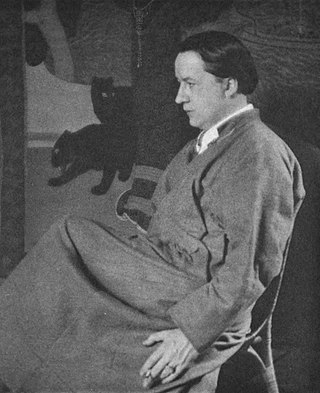
Edmund Dulac was a French-British naturalised magazine illustrator, book illustrator and stamp designer. Born in Toulouse, he studied law but later turned to the study of art at the École des Beaux-Arts. He moved to London early in the 20th century and in 1905 received his first commission to illustrate the novels of the Brontë Sisters. During World War I, Dulac produced relief books. After the war, the deluxe children's book market shrank, and he then turned to magazine illustrations among other ventures. He designed banknotes during World War II and postage stamps, most notably those that heralded the beginning of Queen Elizabeth II's reign.
Robert Lawson was an American writer and illustrator of children's books. He won the Caldecott Medal for his illustrations in They Were Strong and Good in 1941 and the Newbery award for his short story for Rabbit Hill in 1945.
Dorothy Pulis Lathrop was an American writer and illustrator of children's books.

Gordon Frederick Browne was an English artist and a prolific illustrator of children's books in the late 19th century and early 20th century. He was a meticulous craftsman and went to a great deal of effort to ensure that his illustrations were accurate. He illustrated six or seven books a year in addition to a huge volume of magazine illustration.

Maud Fuller Petersham and Miska Petersham were American writers and illustrators who helped set the direction for illustrated children's books that followed. The Petershams worked closely with such pioneering children's book editors Louise Seaman Bechtel and May Massee, and with such innovative printers as Charles Stringer and William Glaser. They worked as a seamless partnership for more than five decades. Both prolific and versatile, they produced illustrations for more than 120 trade and textbooks, anthologies, and picture books. Of the 50 books they both wrote and illustrated, many were recognized with important awards or critical acclaim. They are known for technical excellence, exuberant color, and the introduction of international folk and modernist themes.

Evadne Price, probably born Eva Grace Price, was an Australian-British writer, actress, astrologer and media personality. She also wrote under the pseudonym Helen Zenna Smith.
Jane Turpin is a fictional girl character, created by Evadne Price. Most of these stories were published in The Novel Magazine and later compiled in a book form, in the period 1928 to 1947. Jane is often referred to as the "female William", a reference to the Just William stories of Richmal Crompton which were very popular at the time.
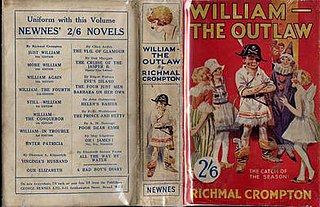
Thomas Henry (1879–1962) was an English illustrator, best remembered for his illustrations of Richmal Crompton's William books.
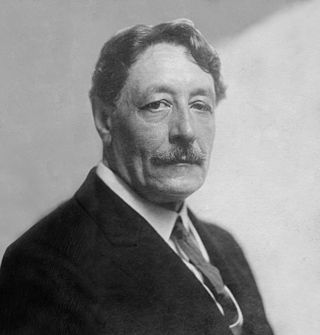
Reginald Bathurst Birch was an English-American artist and illustrator. He was best known for his depiction of the titular hero of Frances Hodgson Burnett's 1886 novel Little Lord Fauntleroy, which started a craze in juvenile fashion. While his illustrated corpus has eclipsed his other work, he was also an accomplished painter of portraits and landscapes.
Harry Rountree was a prolific illustrator working in England around the turn of the 20th century. Born in Auckland, New Zealand, he moved to London in 1901, when he was 23 years old.
Harold Robert Millar (1869–1942) was a prominent and prolific Scottish graphic artist and illustrator of the late nineteenth and early twentieth centuries. He is best known for his illustrations of children's books and fantasy literature. "His work...has a lively, imaginative charm and a distinctive sense of design."

The Illustrated Sporting and Dramatic News was a British weekly magazine founded in 1874 and published in London. In 1945 it changed its name to the Sport and Country, and in 1957 to the Farm and Country, before closing in 1970.
Tales of Mystery & Imagination is a popular title for posthumous compilations of writings by American author, essayist and poet Edgar Allan Poe and was the first complete collection of his works specifically restricting itself to his suspenseful and related tales.
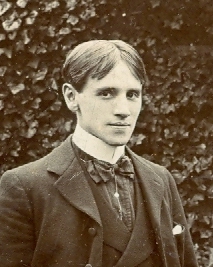
Alfred Garth Jones (1872–1955) was an English artist and illustrator who worked mainly in woodcut, pen and ink line art drawing and watercolour.

Fantasy was a British pulp science fiction magazine which published three issues in London between 1938 and 1939. The editor was T. Stanhope Sprigg; when the war started, he enlisted in the RAF and the magazine was closed down. The publisher, George Newnes Ltd, paid respectable rates, and as a result Sprigg was able to obtain some good quality material, including stories by John Wyndham, Eric Frank Russell, and John Russell Fearn.

There are more than 100 illustrators of English-language editions of Alice's Adventures in Wonderland (1865) and Through the Looking-Glass (1871), with many other artists for non-English language editions. The illustrator for the original editions was John Tenniel, whose illustrations for Alice and Looking Glass are among the best known illustrations ever published.
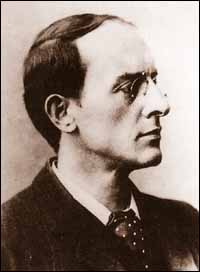
Walter Stanley Paget was an English illustrator of the late 19th and early 20th century, who signed his work as "Wal Paget". Paget held a gold medal from the Royal Academy of Arts, and was the youngest of three brothers, Henry M. Paget (eldest) and Sidney Paget, all illustrators.
T. N. Foulis was a British publisher founded in Edinburgh in 1903. During its first ten years, the firm became well known for producing "highly original, beautifully illustrated books", with contributions by "artists of considerable merit" such as Jessie M. King, H. M. Brock, Hannah MacGoun and Walter Crane. Works published included classics of poetry and prose, gift books, and nonfiction books, many with a Scottish theme.












